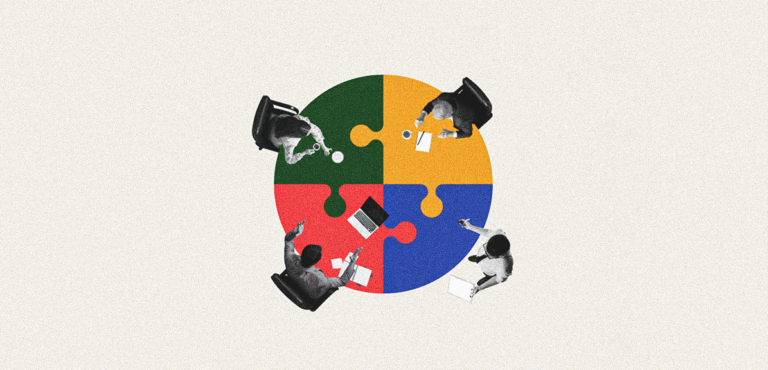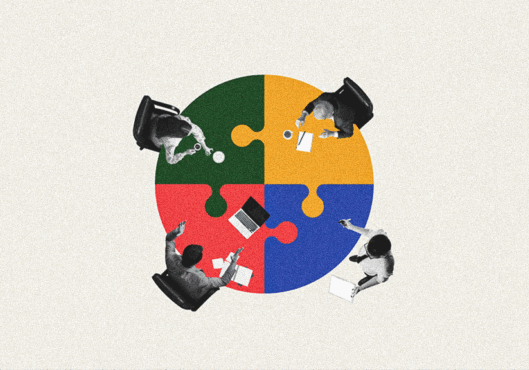
The Rebrand of Radio: Audio Marketing’s Unexpected Comeback
When experts once speculated that radio would fade into background noise and podcasts would become the “new radio”, few predicted the actual outcome, which was audio itself. In 2025, audio marketing is not just back; it is transforming the way people connect, consume, and engage.
From a renaissance in radio to the introduction of immersive podcasts and AI-enabled voice experiences, audio has re-emerged as one of today’s most formidable vehicles for storytelling. It’s intimate, hands-free, and deeply human. In fact, it’s what visuals cannot provide, and that is emotion.
Let’s take a look at the evolution of audio marketing—how brands are tapping into audio to create relevant connections, engagement, and differentiation in a screen-dominated world.
Let’s talk about radio’s surprising rejuvenation
As audio evolves, radio hasn’t disappeared—it’s adapted. In fact, it’s thriving. In the first quarter of 2025, ad-supported audio consumption hit 64% of total listening time in the U.S., nearly matching television ad-supported consumption.
What has contributed to this revival? Radio is no longer just AM/FM, nor is it just a service for listening. Stations are now streaming live, providing selected shows on demand as podcasts, and utilizing technology to create personalized playlists, allowing access to content anytime, anywhere. This hybrid model adds a level of freshness and relevance while preserving the exceptional quality of audio, including the warmth, tone, and authenticity of a human voice. An algorithm cannot replicate this experience.
For marketers, this is valuable in building a connection. An immediate connection is created, whether it is a morning show, a sports announcer, or a local news update. Listeners begin to trust what they hear during the daily radio listening experience, so ads feel more like friendly suggestions rather than interruptions. In short, radio is not simply a passing trend; it is alive and active.
How podcasts become mainstream
Podcasts are no longer just a side content for hobbyists. In 2025, there will be over 4.58 million podcasts worldwide, with nearly 75% of Americans having listened to at least one podcast over time. One of the reasons for this is the convenience that a podcast offers over other content – one can listen while cooking, walking, or exercising while they consume this media. Topics range from true crime and mental health to hobbies and niche interests. If someone enjoys a particular subject matter, there will likely be a podcast about it.
Marketers are catching on, despite being late to the game. U.S. podcast ad spend is expected to reach $2.55 billion in 2025, representing an almost 12% year-over-year increase from 2024. The reason for this increase in marketing revenue is that podcasts foster a sense of intimacy between brands and consumers. Consumers who listen to podcasts feel like they are part of a conversation. With this, ads will feel less like an ad, and more personal in nature.
For example, L’Oréal’s “This Is Not a Beauty Podcast” podcast. Hosted by Isabella Rossellini, the blend of brand storytelling and the content was engaging enough that the listener wanted to listen and not scroll past during the podcast. This is the prototype for audio marketing in modern times: content that engages, informs, and gradually sells.
Voice Technology: Where AI connects us to real experiences
Using smart speakers and voice assistants has become a standard part of our day-to-day experience. Voice-first devices, such as Amazon Echo, Google Nest, and Apple HomePod, have transformed the way we engage with content: we no longer just hit play—we now ask, command, and interact with our devices using voice.
By 2025, AI-powered voice experiences are expected to become hyper-personalized. Consider interactive ads, where a listener can respond to a message and receive a personalized recommendation from the ad in real-time. Or branded voice experiences that allow consumers to “talk” to the brand, whether asking a coffee franchise what seasonal drinks it offers, or looking at curated spots by a travel company.
This is marketing that isn’t talking to audiences; it is talking with them. And if done well, it builds trust, loyalty, and engagement.
The integration of radio, podcasts, and streaming
Here, productivity and fun begin: the lines between radio, podcasts, and streaming platforms are fading fast—an article I read in late October illustrated this shift. A partnership between Netflix and Spotify to stream podcasts using Netflix as the platform, “For Netflix Subscribers Only,” is a notable example.
What does this mean for marketers? Everything:
- Cross-platform reach: Your audio content is now part of major video-first platforms and reaching new audiences beyond a podcast.
- Increased level of engagement: Video podcasts offer an enhanced experience that fosters a more intimate connection between audio and visual storytelling elements.
- Brand storytelling prime: Brands can experiment with hybrid content that doesn’t feel forced but feels fresh and new.
Effective audio marketing techniques in 2025
Marketers, here’s how to fully commit to the audio tsunami:
1. Branded Podcasts: Original podcasts are a requirement, not a nice-to-have. A good, branded podcast demonstrates long-term trust and loyalty to your audience. From storytelling to highlighting the leaders in your company (thought leadership), long-format branded content is not to be overlooked.
2. Programmatic Audio Spots: Programmatic is the intersection of automation and precision targeting. Brands can reach listeners based on demographics, interests, and listening habits, and provide relevant ads at the exact moment of highest engagement.
3. Immersive Sound Experiences: 3D sound, spatial audio, and binaural recordings are more than a nice sound effect – they’re places for immersive sound experience. Imagine hearing coffee beans grind while you are in a coffee spot or listening to a travel ad with waves crashing around you.
4. Localized Content & Voice Marketing: Content and voice marketing that localizes the experience creates an immeasurable sense of connection. A local restaurant, for example, can use geotargeted voice ads to send nearby users promo offers via a smart speaker.
5. Audio Interactivity: The future is two-way. Interactive storytelling and choose-your-own-adventure formats, as well as live audience polling, are gaining popularity, transforming passive listeners into active participants.
Why audio is back—and what’s next
Audio is back because it’s human: it conveys emotions, personalities, and nuance in ways that text or visuals cannot. Whether it’s radio hosts or the voices of podcast narrators, audio builds intimacy, trust, and connection in the way we communicate.
Audio is also contextual, meaning it fits easily into any mode of transport or workout, or during any chores or tasks you do throughout the day, and it keeps your listeners engaged without requiring exclusive focus, unlike visual content. It is only going to get smarter.
It will become even more personalized by utilizing AI, incorporating voice interactivity, and combining formats with AR/VR to create an even more immersive, interactive, and valuable tool for brands in 2025.
Cut to the chase
Audio captures, connects with, and builds trust with your audience like no other. Don’t miss out; take advantage of the Podcast, Radio, and Voice opportunities in 2025. Develop your audio strategy now, before your competitors do, and let your brand be heard.


